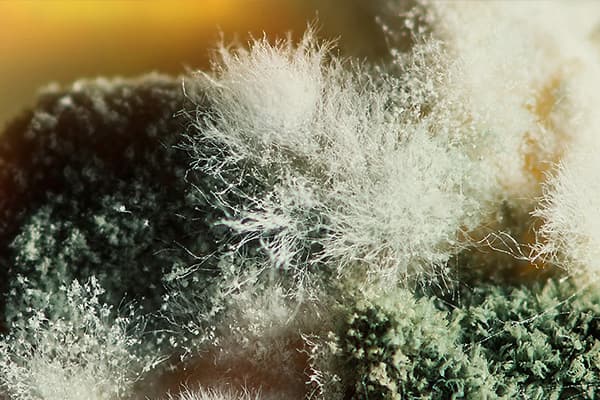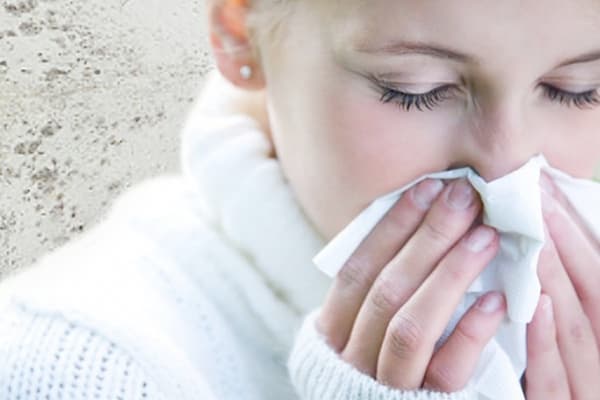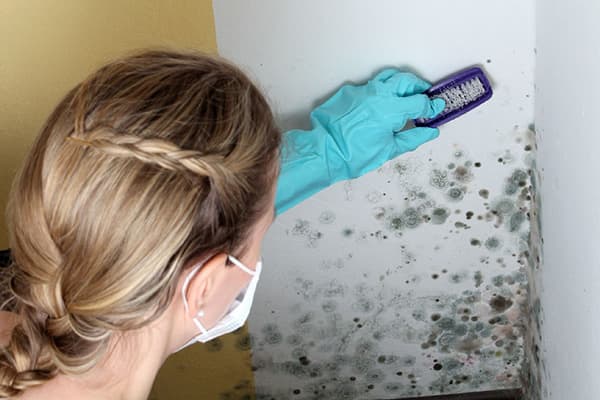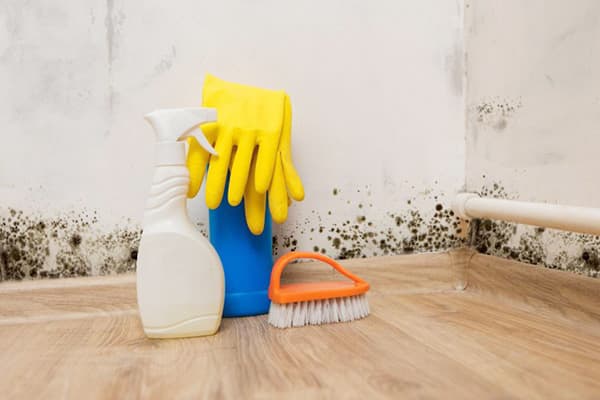What is the danger of mold appearing in the apartment?
Mold is not such a rare guest in our homes. But not all of us recognize in this impostor the danger that he actually carries with his presence. Often a black spotted coating is perceived as ordinary dirt. And it’s good if it is even washed off periodically. In fact, everything is not so simple and harmless. What is the danger of mold in the apartment and why is it necessary to get rid of it?
What is mold?
Mold is a fungus. Accordingly, it has a rapidly growing micelle ("rhizome") and propagates by microscopic spores. In the presence of favorable conditions, spores quickly develop on any material or coating and begin to multiply rapidly.
Where can mold be detected? Almost any surface is habitable for fungus:
- walls and ceiling;
- windows, mirrors;
- floor and doors;
- furniture;
- carpets, clothes;
- books, wallpapers;
- Appliances;
- plumbing, tile, pipes;
- building materials;
- products.
That is, he can live in the kitchen, in the bathroom, toilet, hallway, pantry, library, basement ... Relatively soft materials (wood, textiles, paper) of the fungal colony can bring to a state of complete decay.
Even in the bedroom, if the conditions for the life of the mold are suitable, it is able to settle "seriously and permanently." And suitable for it are, first of all, heat, moisture and lack of ventilation. She is always where damp, warm and stuffy.
Mold fungi, like all living things, secrete metabolic products. Only in molds are these fumes toxic. A single colony of mold produces millions of microscopic spores daily, which disperse in the air, carrying toxins with it. The main danger of proximity to mold for humans is the inhalation of these spores.
How is this dangerous?
The most common mold in the house is black, like dirt. Other species most commonly inhabit products or textiles.
Black fungi are quite aggressive. If you do not fight them, they are able to destroy the house, turning wooden floors, floors, drywall constructions into dust.
But mold in the apartment is dangerous, first of all, for the health of residents. Its spores, which can enter the body when inhaled, through the skin or with contaminated products, become the cause of a variety of diseases, and far from harmless.
If inhaled, spores may occur:
- rhinitis;
- sinusitis;
- sinusitis;
- bronchitis;
- tracheitis;
- pneumonia;
- pulmonary aspergillosis;
- candidiasis;
- stomatitis;
- myocarditis;
- meningitis;
- decreased immunity;
- diathesis and allergies;
- damage to the kidneys, liver;
- oncological diseases.
In contact with skin, the following are possible:
- dermatitis;
- eczema;
- hives;
- conjunctivitis;
- mycoses (fungal infections of the skin, then muscles, bones, internal organs).
When ingested, fungi most often cause botulism - serious poisoning, as well as allergic reactions, various lesions of the digestive system and even blood.
If mold has settled on the product, discard it completely, whether it is a loaf of bread or a can of pickles. To remove the top layer does not at all mean to get rid of the fungus: its spores have already penetrated to the very depths, just until they are visible to the eye.
How to get rid?
As you can see, the list of problems that can be caused by mold is not only large, but far from harmless. The greatest threats await people with weakened immunity, allergy sufferers, asthmatics, as well as young children whose immunity is not yet fully formed.With a good immune response, the body can struggle with mold spores that enter it for a relatively long time. But also not infinitely. Therefore, it is necessary to get rid of such a neighborhood as soon as at least a small outbreak is discovered.
The fungus on the walls is especially dangerous: over a large area it spreads almost at lightning speed, respectively, the concentration of toxins and spores in the air of such a room is also growing at lightning speed, increasing the risk of consequences for residents. In addition, concrete and brick pass the mold deep enough, unlike, for example, metal, glass or tile.
Moldy “settlements” are not enough to simply wipe with a sponge. First, the fungus needs to be washed off, and as thoroughly as possible, from all coatings, corners, joints, crevices (throw away things and objects struck by it!). Secondly, kill its micelles on surfaces with special means, thirdly - create conditions unsuitable for the subsequent spread of mold.
So, how do you handle mold habitats after flushing? First of all, do not try to do this with bactericidal agents: they are designed to kill bacteria, and in this case we are talking about fungal infections. Means, means should be antifungal.
For example, it is possible to treat affected surfaces with radiation from an ultraviolet lamp, as well as vinegar, a solution of soda or hydrogen peroxide (just keep in mind that the latter can whiten the color of the coating).
Walls cleaned from wallpaper or paint are treated with a special antifungal primer. The same is done with tile seams.
Tiles, flooring, glass and mirror surfaces can be saved by chlorine bleach or ordinary ammonia.
If the room in which construction and finishing works are infected, then antifungal compounds must be added to all construction or finishing mixtures.
And so that the mold attack does not resume, it is necessary to provide good ventilation in the premises and maintain the humidity as low as possible.
Mold in an apartment or house is a serious danger. To prevent harm to the health of the inhabitants of such a dwelling, including animals, it is important to take measures to speed up the destruction of mold colonies. There are many ways to do this; choosing the right one will not be difficult. But it is equally important to constantly take care that the microclimate of the premises does not favor the reappearance of an uninvited "neighbor."



